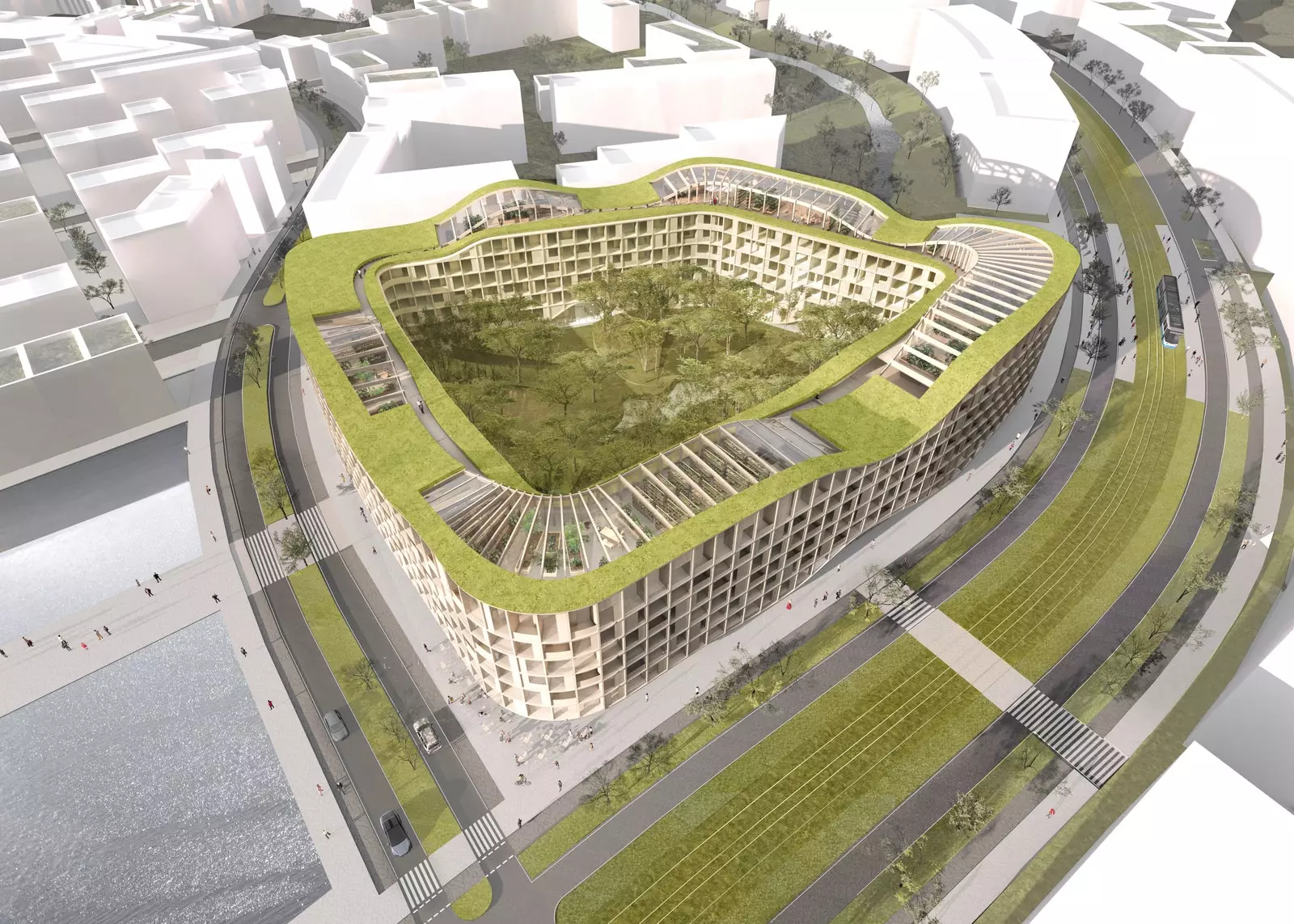We know that Iceland is one of the countries that cares most about preserving its ecosystems and renewable energies, so it is not surprising that it is in this country that the idea of give a second life to a landfill.
the contest C40 Reinventing Cities it has served for the architecture studio Jakob+MacFarlane and T.ark to win the award for the best ecosystem building to occupy a landfill in Iceland.
The urban and the natural come together in LivingLandscape, a wooden construction that will occupy 9,000 m2 on a large abandoned industrial site in the city of Reykjavík. This mixed-use, O-shaped building made entirely of wood , will combine homes for students, the elderly and families with coworking spaces, nurseries and the sale of local products.
“The idea of living with and around nature is key to our project . To offset years of pollution and heal man-made damage to what was once a beautiful coastal landscape, we re-created Iceland's authentic natural landscape on top of an old landfill site."
This idea of giving a second life to abandoned places is part of the plan Reykjavik Masterplan 20-30 with which they want to transform these industrial areas into residential spaces for the coming years. It also follows the line of the project city line , an electric public transportation system that wants to connect downtown Reykjavik with its newly developed areas.

Landfills that generate life.
See photos: Iceland's best hot springs and natural pools
A GREEN BUILDINGLiving Landscape will be a self-sufficient and sustainable building, developing its own microclimate, and hopefully, it will be a new generator of life.
“Mimicking nearby wetlands, the courtyard landscape will manage rainwater and purify polluted water through a system inspired by stratovolcanoes. While the techniques used on the roof have been inspired by those used by Icelanders to insulate their homes since ancient times, "they underline.
The pond and the soil of the soil will contribute to reduce heat waves , while wood construction and redeployed flora will enhance carbon capture and storage.
"Our project is strongly influenced by the unique land and water landscape of the country, in particular, by a series of islands located near Reykjavík (with Richard Serra's Áfangar geological sculpture built on one of them)", they add.
You may also like:
- The Golden Circle: history, waterfalls and geysers in Iceland
- The tourism that Iceland wants
- Iceland, the hypnotic power of water
